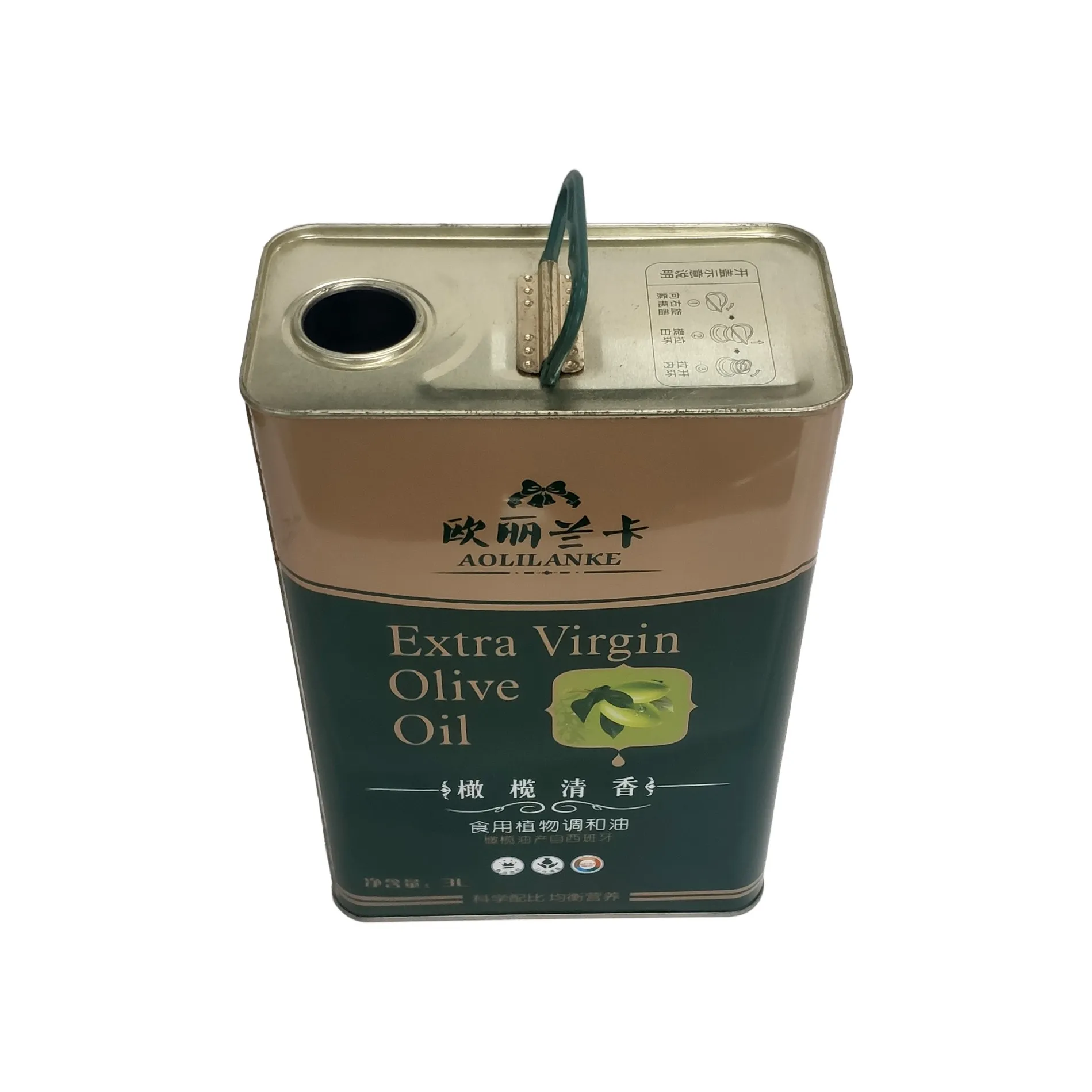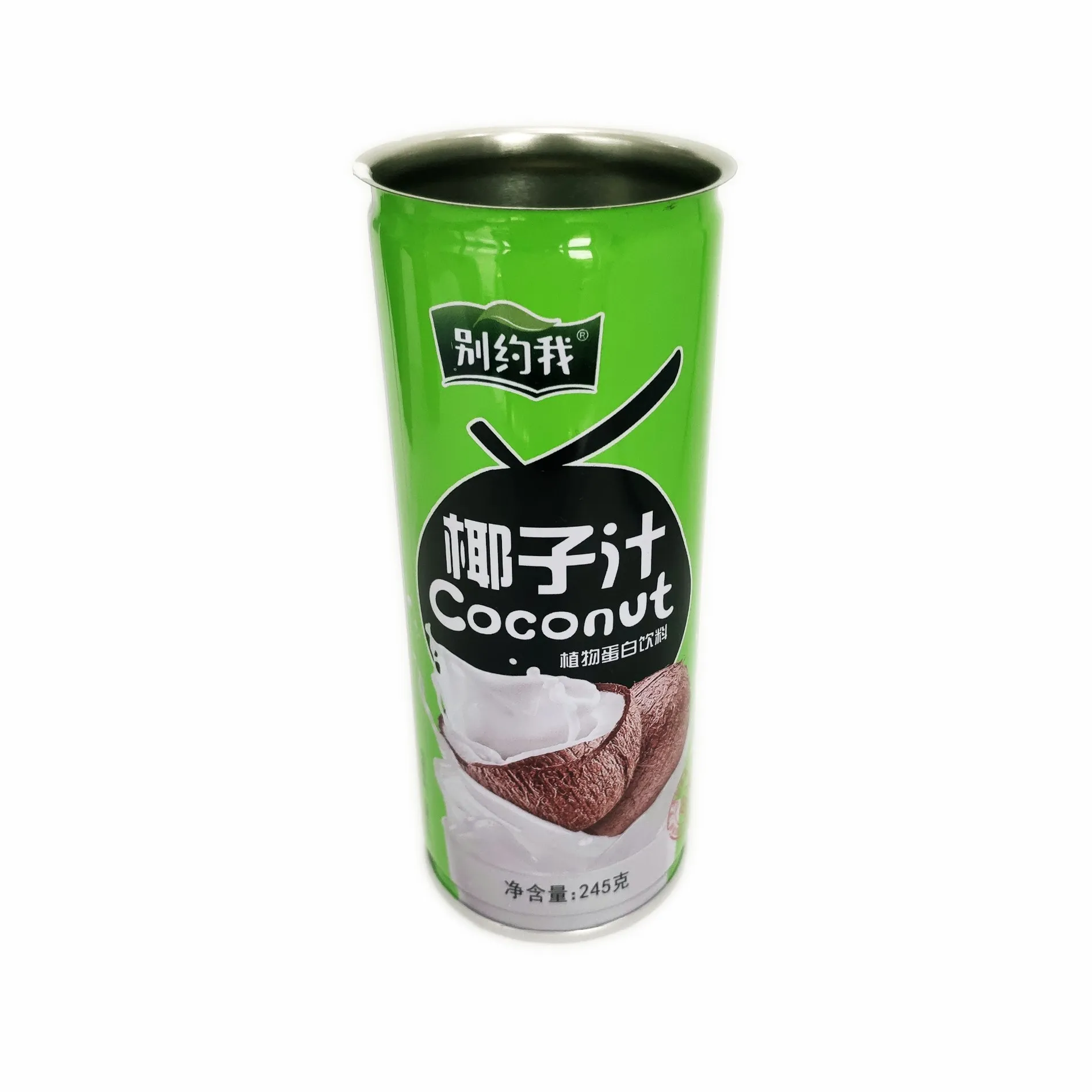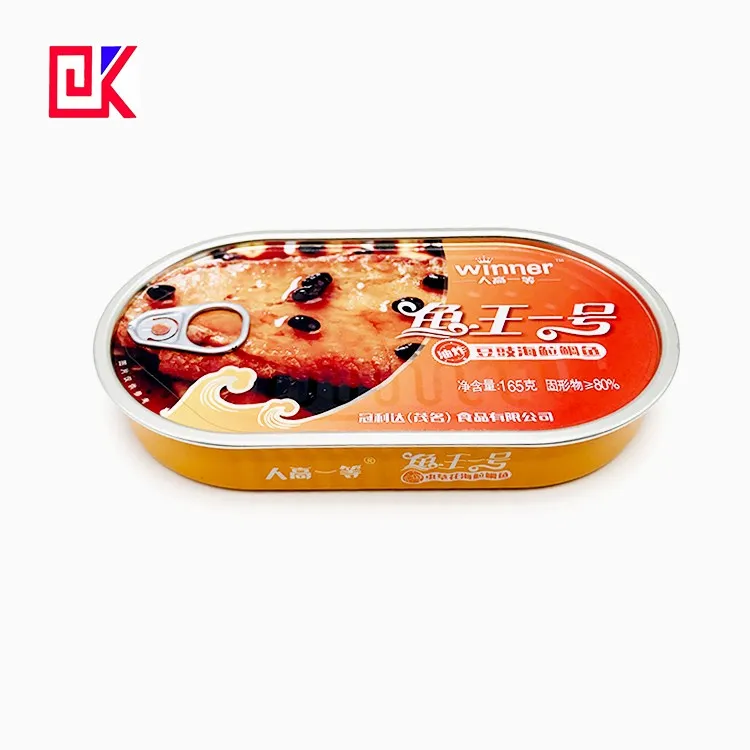As a traditional and widely used packaging material, tinplate cans are gradually making a comeback for storing kitchen condiments. Not only are they favored for their excellent corrosion resistance and airtightness, but they are also increasingly recognized by consumers for their environmental friendliness and recyclability. However, are tinplate cans truly suitable for storing kitchen condiments?
This article will delve into this question, analyzing various aspects, including material properties, safety, and applicability, to provide consumers with scientific reference.

What are the material characteristics of tinplate cans?
1. What are tinplate cans primarily made of?
Tinplate cans are primarily made of mild steel coated with a thin layer of tin. The purpose of tin plating is to protect the iron from contact with air and moisture, thereby preventing oxidation and corrosion. The mild steel provides the can's structural strength, while the tin layer imparts excellent corrosion resistance. In addition, some tinplate cans are coated with an organic coating to further enhance their protective properties, ensuring the safe storage of food or condiments.
2. What is the role and importance of the tin coating?
The tin coating plays a crucial role in tinplate cans. Tin has excellent chemical stability, effectively blocking oxygen and moisture in the air, preventing oxidation and rusting of the iron. It also prevents direct contact between the food or condiments in the can and the iron, preventing chemical reactions caused by acidic or alkaline substances, thereby protecting the food's original flavor and nutritional value. High-quality tin plating ensures a uniform and durable tin coating, providing long-lasting protection for the tinplate can.
How safe are tinplate canned kitchen condiments?
1. Will tin from tinplate cans migrate into food?
Food safety is a major concern for consumers. Research shows that under normal storage conditions, the amount of tin migration from tinplate cans is extremely low, far below the limits set by national and international food safety standards. Tin migration is primarily affected by the following factors:
• The pH of the food: Condiments with high acidity or alkalinity may accelerate tin migration. However, even in these cases, the amount of tin migration remains within a safe range.
• Storage Temperature: High temperatures increase the rate of tin migration, so it's recommended to store canned condiments in a cool, dry place.
• Storage Time: Long-term storage may cause trace amounts of tin migration, but this generally poses no health risk.
Overall, as long as you choose high-quality tinplate cans and use them correctly, tin migration will not pose a health risk.
2. Is the inner coating of the tinplate can food-safe?
In addition to the tinplate coating, many tinplate cans also feature an organic inner coating, which further isolates the food from the metal. This inner coating is typically made of food-grade epoxy resin or other non-toxic coatings, providing excellent moisture and oil resistance. This inner coating not only enhances the can's protective properties but also prevents oils and acids in food from corroding the tinplate, extending the can's shelf life.
A high-quality inner coating ensures the safety and stability of food during long-term storage. Therefore, when choosing tinplate cans, consumers should prioritize products with guaranteed inner coating quality.
Why are tinplate cans more suitable for storing kitchen condiments?
1. What are the advantages of tinplate cans in terms of moisture and oxygen resistance?
Condiments such as soy sauce, vinegar, and chili sauce typically contain high levels of water and acid. These properties make them susceptible to moisture and oxidation during storage. Tinplate cans, with their tin plating and inner coating, effectively isolate air and moisture, preventing condiments from deteriorating due to moisture. Furthermore, their excellent airtightness ensures that condiments retain their freshness and flavor during long-term storage.
2. How does the durability of tinplate cans meet kitchen needs?
Tinplate cans are sturdy, resistant to drops and pressure, making them suitable for a variety of daily household uses. Compared to glass jars, tinplate cans are less prone to breakage and safer to use. Furthermore, their material can withstand high-temperature sterilization, ensuring the hygienic safety of condiments during production and storage.
3. Do tinplate cans meet the environmental needs of modern families?
With growing environmental awareness, consumers are increasingly concerned about the recyclability and environmental friendliness of packaging materials. Tinplate cans are highly recyclable and can be recycled and reused after use, reducing the environmental burden. In contrast, plastic containers are less environmentally friendly and can easily contribute to plastic pollution. Therefore, tinplate cans better meet the environmental needs of modern families and become a sustainable choice.

How do tinplate cans compare with other packaging materials?
1. What are the advantages and disadvantages of tinplate cans compared with plastic containers?
Advantages:
• Strong corrosion resistance: Tinplate cans have excellent corrosion resistance and can effectively protect condiments from moisture and oxidation.
• Environmentally friendly and recyclable: Tinplate cans can be recycled, meeting environmental requirements and reducing resource waste.
• High durability: Tinplate cans are sturdy and durable, resistant to breakage, and suitable for long-term storage and frequent use.
Disadvantages:
• Heavy weight: Compared to plastic containers, tinplate cans are heavier and less convenient to carry.
• Higher cost: The production cost of tinplate cans is higher than that of plastic containers, which may increase the product price.
2. What are the differences between tinplate cans and glass containers?
Advantages:
• Shatterproof and durable: Tinplate cans are shatterproof and safer to use, especially suitable for frequent use in homes.
• Moisture and oxygen resistant: Tinplate cans offer superior corrosion resistance to glass containers and are more effectively shielded from air and moisture.
• Lower cost: Tinplate cans are cheaper to produce than glass containers, making them suitable for large-scale production.
Disadvantages:
• Poor transparency: Tinplate cans are typically opaque, making it difficult to see the contents, while glass containers are transparent, making it easier to observe the contents.
• Environmental impact: While tinplate cans are recyclable, glass containers are easier to recycle and have a lower environmental impact.
3. How do tinplate cans compare to ceramic containers?
Advantages:
• High durability: Tinplate cans are sturdy, resistant to impact and suitable for everyday use.
• Lower cost: Ceramic containers are more expensive to produce, making tinplate cans more cost-effective.
• Strong Corrosion Resistance: The tinplate coating and inner coating of tinplate cans provide enhanced corrosion resistance.
Disadvantages:
• Poor Aesthetics: Ceramic containers offer greater design diversity and aesthetic appeal, while tinplate cans are relatively monotonous.
• Heavy Weight: Ceramic containers also suffer from the issue of being heavy, which hinders portability.

How to Choose the Right Tinplate Can for Kitchen Condiments?
1. How to Judge the Quality of a Tinplate Can?
Choosing high-quality tinplate cans is key to ensuring food safety and the quality of your condiments. Consumers should consider the following when purchasing:
• Brand Reputation: Choose tinplate cans from reputable brands to ensure their production processes and quality control meet standards.
• Visual Inspection: Check the can surface for a smooth finish, an even tin coating, and no visible scratches or peeling.
• Inner Coating: Choose a can with a guaranteed inner coating to avoid direct contact between food and metal.
• Certification Marks: Check the food safety certification mark on the packaging to ensure compliance with national and international food packaging standards.
2. What precautions should be taken when storing condiments in tinplate cans?
Proper storage can extend the shelf life of condiments and preserve their flavor and quality. Here are some storage tips:
• Store away from direct sunlight: Store tinplate cans in a cool, dry place, away from direct sunlight to minimize the effects of light on the condiments.
• Keep dry: Avoid storing in humid environments to prevent moisture from getting into the cans, which can affect their corrosion resistance.
• Temperature control: Maintain a stable storage temperature and avoid frequent temperature fluctuations to reduce the risk of damage to the tin plating.
• Keep sealed: After opening, tinplate cans should be kept as tightly sealed as possible to prevent air from entering and prolong the freshness of the condiments.
3. How can I extend the life of tinplate cans?
Proper use and maintenance of tinplate cans can extend their lifespan and ensure the safe storage of condiments:
• Avoid mechanical damage: Avoid excessive stress on the cans during use to prevent scratches or damage to the tin plating.
• Regular Cleaning: Use a mild detergent and a soft cloth to clean the can. Avoid using harsh cleaning tools to prevent scratching the coating.
• Proper Lid Opening: Use appropriate tools to open the lid and avoid excessive force to minimize deformation and coating damage.
• Timely Replacement: If you notice rust, cracks, or detached tin plating on the can, replace it promptly to ensure the safety of the condiment.

What are the regulations and standards for tinplate cans in food packaging?
1. What are the national and international regulatory requirements for tinplate cans?
To ensure food safety, national and international organizations have established strict regulatory standards for food packaging materials. The Chinese National Standard (GB) specifies in detail the material composition, tin plating thickness, and inner coating quality of tinplate cans to ensure they meet safety requirements for food contact materials.
Internationally, organizations such as the European Food Safety Authority (EFSA) and the U.S. Food and Drug Administration (FDA) also strictly regulate the production and use of food-grade tinplate cans, requiring that the tin plating and inner coating meet non-toxic and corrosion-resistant standards. In addition, ISO (International Organization for Standardization) has also developed relevant food packaging standards to provide technical guidance and quality assurance for the production and use of tinplate cans.

